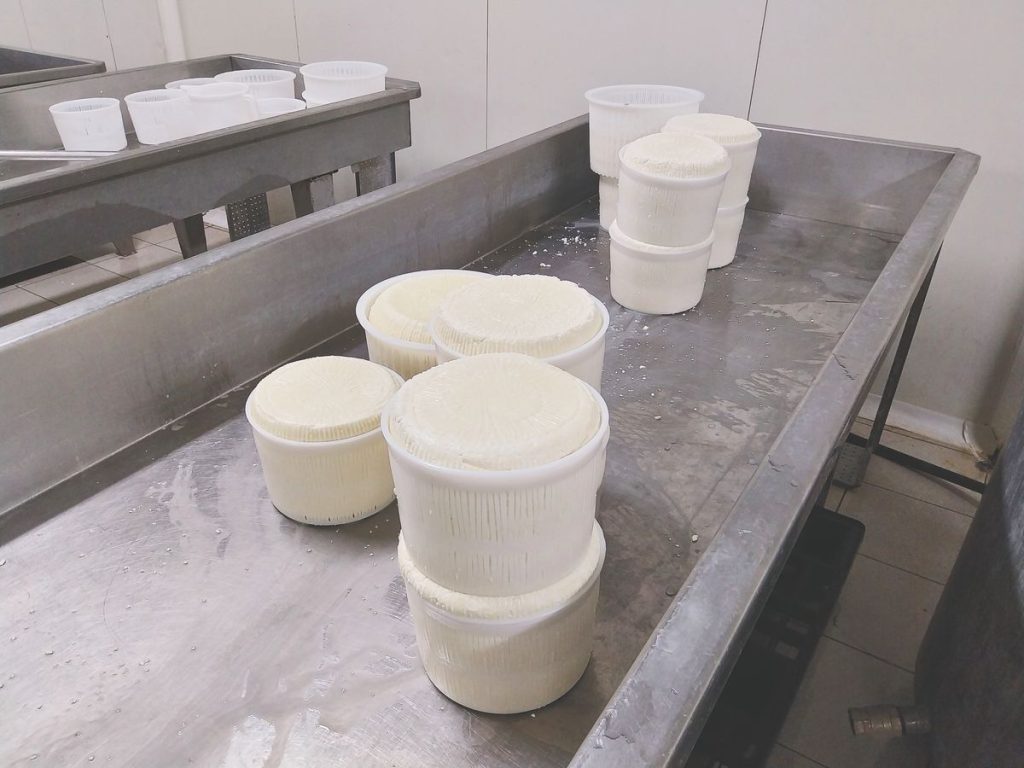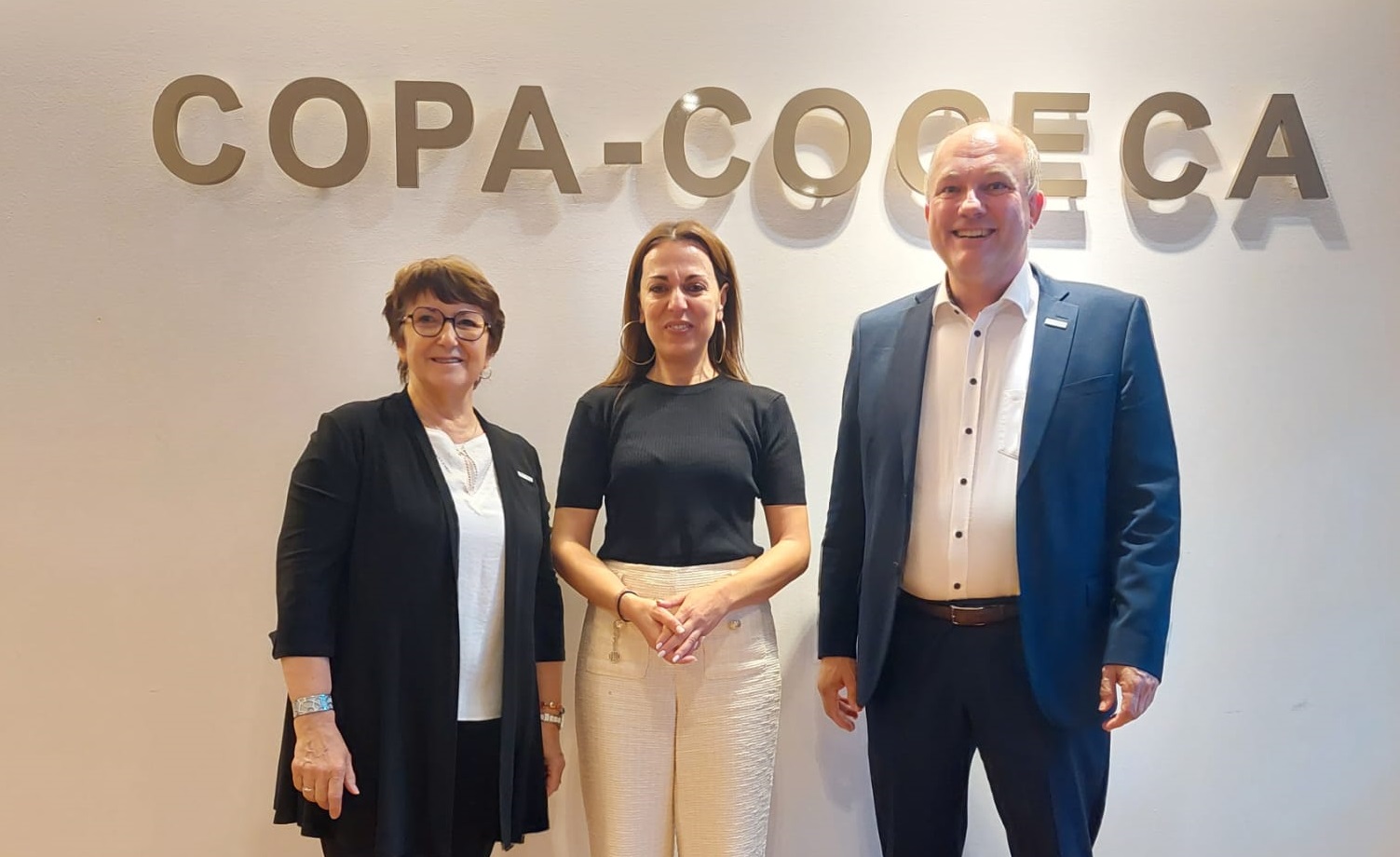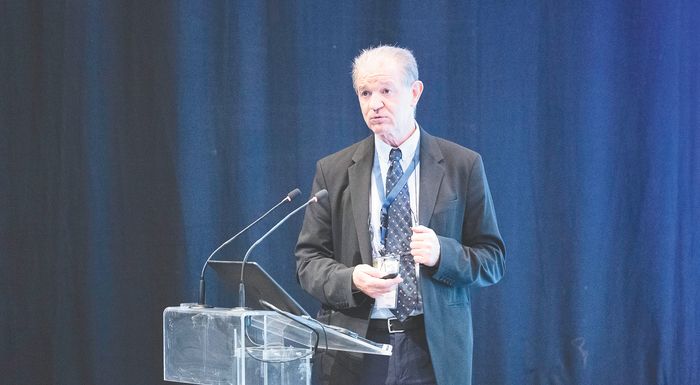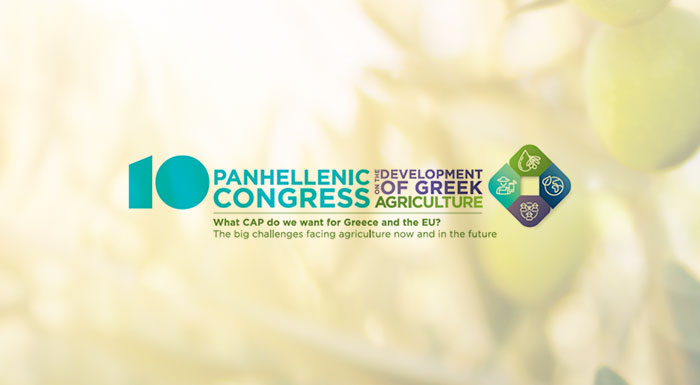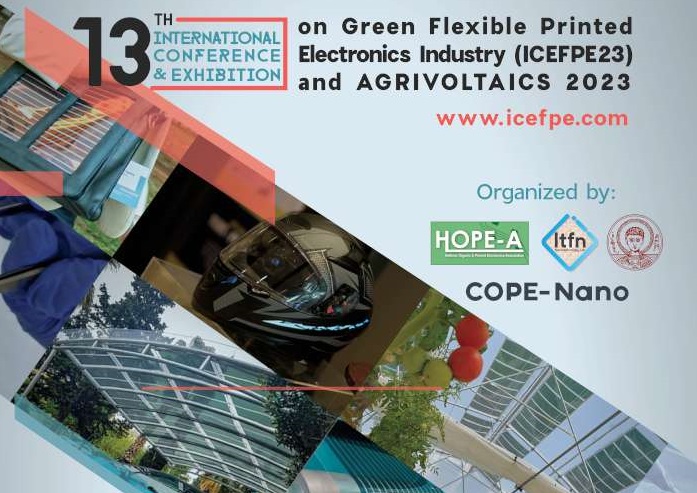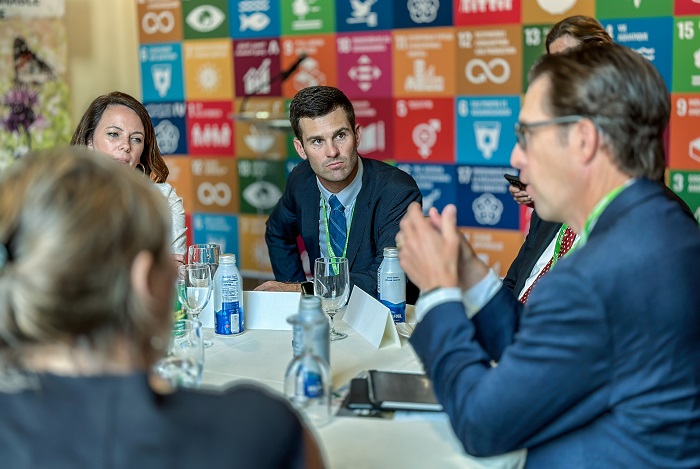Application of Smart Farming in the Prespes area in the case of dry beans
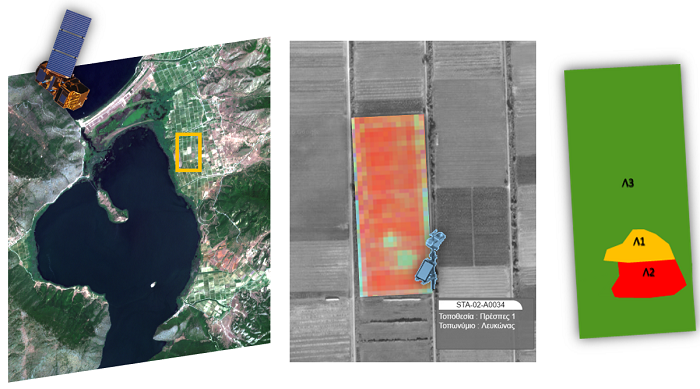
Dry beans is a traditional product of the specific area, recognised as a Protected Geographical Indication (PGI) product; on top of that, it is the main financial activity of the area. The Agricultural Cooperative of National Park of Prespes’ Bean Producers «Pelekanos» was established in 2004, has 36 members and produces packages and markets more than 50% of the local dry beans’ production.
Use of Sentinel-2 / Copernicus satellite images for the estimation of the spatial differentiation of the soil nutritional status in the area of Lefkonas (3 sections; Λ1, Λ2, Λ3 respectively).
For the application of the smart farming services in the area, GAIA ΕΠΙΧΕΙΡΕΙΝ is collaborating with the agricultural cooperative «Pelekanos» since spring of 2016. The aim of this collaboration is to allow all dry bean producers benefit from the reduced production costs, improved production and better management of all risks that target the specific cultivation, starting 2017.
The pilot phase of the first cultivation period of 2016 focused on (just like in the case of the pilot in Chalkidiki) the precise determination of the soil and climate variability of the area, the response of the scientific plant protection models, the recording of the farmers’ cultivation practices regarding fertilisation, irrigation and plant protection and the potential benefit of the farmers when they fully applied the advice produced by the service by 2017 and afterwards.
In order to achieve the objectives of the pilot phase, the smart farming team of GAIA EPICHEIREIN and NEUROPUBLIC studied the soil and climate profile of the area and selected three different locations and one field in each area. In these fields, GAIAtron Atmo telemetric stations recording atmospheric parameters were installed, soil samples were taken from four (4) different fields and insect traps for the Old World (African) bollworm were set up.
On top of that, Sentinel-2 satellite images from the Copernicus programme of the European Space Agency were used, as they contain information on soil, water and vegetation indices. The processing of these images was used to provide an estimate of the soil variability of the area and the selected fields. Contrary to the smart farming project in Chalkidiki, no GAIAtron Soil telemetric stations for the smart irrigation were installed, due to the fact that flood irrigation system is used in the area.
In this case, waste of water and nutrients is rather high and hard to control; as a result, before smart irrigation techniques are applied, farmers will have to migrate their fields to drip irrigation systems. Next to that, the agronomists of the cooperative were trained so that they could make use of GAIA EPICHEIREIN’s Web applications for smartphones and computers for monitoring the cultivation practices in the selected fields and recording observations in them.
Fertilisation
Soil sampling took place in six different locations of the four selected fields. The results of the soil sampling analysis fed scientific fertilisation models that have been specifically developed for beans using the specialised software GAIA Agronomy. GAIA Agronomy, based on the crop type and fourteen different soil parameters produces precise fertilisation advice, which defines the nutrients’ units, the mean and the time of their application in the field.
However, in the pilot phase of the project, the aim was to allow farmers to apply their regular fertilisation program and to evaluate the differences that come up from the comparison with the optimum fertilisation application that GAIA Agronomy suggests. This comparison exhibited significant variations in two different directions, referring to both over- and under-fertilisation in specific nutrients, which caused not only increased costs but also reduced yield.
More specifically, Table 1 shows that the cost that farmers could save on fertilisers for the four different fields had they followed the fertilisation advice ranges from 4 to 44 euros per hectare. In addition, under-fertilization with specific macro- and micro-nutrients resulted in negative effects (e.g. deficiencies and reduced productivity) which may have low or high impact to the production.
The same table shows the differentiation in the need for macro-nutrients between the four different fields as well as between the three different sections of a specific field (in the area of Lefkonas). In order for the team to select the soil sampling spots in the four different fields and to decide that in one of these, due to high variability, three different samples had to be taken (Lefkonas), the most appropriate remote sensing tools of NEUROPUBLIC were used.

The high variability of fields in terms of their nutritional status requires the application of significantly different volumes of each nutrient. Blended fertilisers that are available to farmers in the specific area cannot address the different ratios of nutrients that each field requires. This fact may lead to deficiency (under-fertilisation) or excess (over-fertilisation) of the nutrients, with significant effect not only on the production (qualitatively and quantitatively) but also financial (fertilisation cost). Compound fertilisers, which would allow the addition of each nutrient’s units accurately, are more expensive. This issue highlights the need for increased availability of blended fertilisers which are adapted to the needs of the area’s fields, so that the benefits of smart farming in terms of fertilization may be exploited.
Plant protection
The most important pests of bean cultivation in the area of Prespes are the red spider mite and the Old World (African) bollworm, followed by aphids and bean thrips. In terms of diseases, the most common ones are anthracnose, powdery mildew, Alternaria leaf spot, ascochytosis, white mold και bean rust. It becomes obvious that pest control in the case of beans is a challenging task, due to the high number of enemies, a fact that only gets worse by the lack of approved plant protection products for pests such as tetranychus.
The project started with the recording of the microclimatic conditions that favor the development of diseases and pests. This was combined with the systematic observation of these enemies’ populations (e.g. using insect traps for the African bollworm) and the symptoms of diseases. These data were used for the validation and adaptation of the models for the specific diseases and pests, in order to allow the timely delivery of plant protection advice.
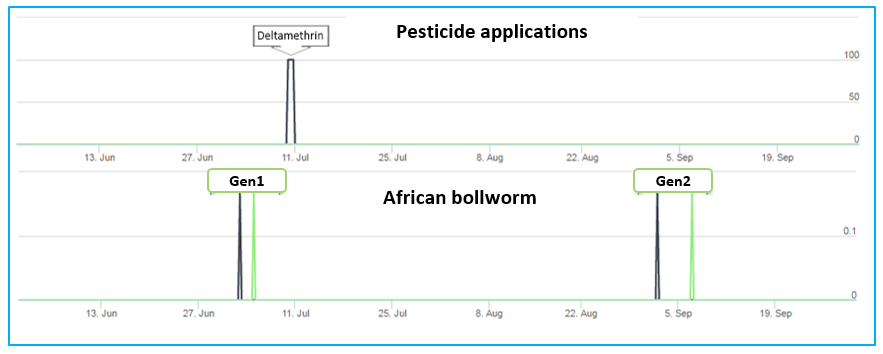
The scientific model for the African bollworm showed a new generation at Lefkonas and Prodena (on the east side of the lake) starting on 3/7/2016, while at Pyli (on the west side of the lake) a little bit later (5/7/2016), a fact also validated by the observation of a critical mass of population in the insect traps that were installed in field sections where no pest control applications were performed. Indeed, a few days later, significant infestation by the African bollworm was reported at the aforementioned areas. The microclimatic variations, and more specifically temperature ones, affect the date of appearance of the African bollworm; as a result, the insect appears earlier in the areas on the east side of the lake compared to the western ones.
Following the warning provided by the model, the producers performed the necessary applications of pesticides on 11/7/2016 (excluding the field at Pyli, which is organic); as a result, the effects of the infestation were significantly reduced.
The model showed increased risk of infestation by the African bollworm at the same areas in the beginning of September 2016. However, due to the fact that this was a harvesting period for beans, the producers decided to avoid applying pesticides as this would lead to increased residues of the pesticide on the beans.

In the case of red spider mite, the model showed a new generation starting on 27/6/2016 at the earliest of the fields; a fact confirmed by field observations 6-8 days later. Based on this warning, farmers were advised to proceed with a sulphur application, which proved to be timely and effective. In general, the model developed for the red spider mite showed increased risk of infestation starting with the areas which exhibited higher temperatures, followed by others; first at Prodena, then at Lefkonas and last at Pyli.
The model for anthracnose provided warnings for high infection risk in two periods starting on 26/7/2016 and 8/8/2016 respectively. Based on these warnings, farmers proceeded with applications of pesticides a few days later. The specific pesticide has a protection period of about seven days after its application; as a result, it was still effective when the next warning for the same disease was received. The advice was confirmed six days later, by the anthracnose symptoms observed in non-treated fields.
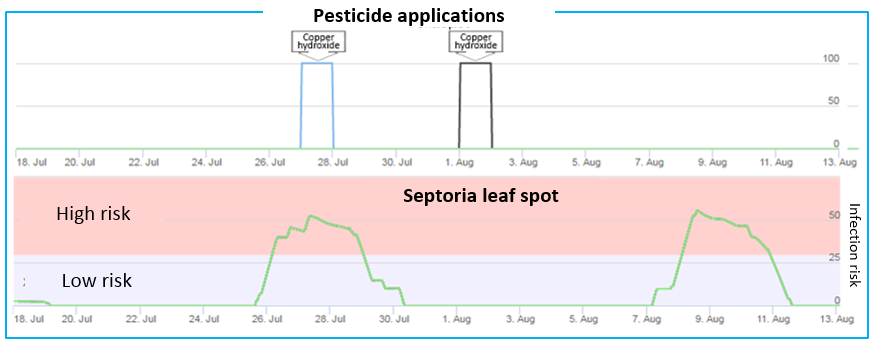
Conclusions
The first year of the project highlighted the important effect of each area’s microclimate – referring even to small areas – in the differentiation of the infection and infestation by diseases and pests, respectively. A typical example was the Pyli area, which does not exhibit infections and infestations by most of the aforementioned diseases and pests, due to the significant variations in the microclimate of each area, such as lower temperatures.
Regarding fertilisation, significant differences were observed between the traditional fertilisation applications and the advice which was based on data and provided by validated scientific fertilisation models. This affected not only the production cost (due to increased fertilisation costs) but also the yield – both qualitatively and quantitatively. The objective of the second year of the project will be the application of a fertilisation program based on the advice provided by the service as well as the more accurate application of the plant protection advice by all members of the agricultural cooperative.
